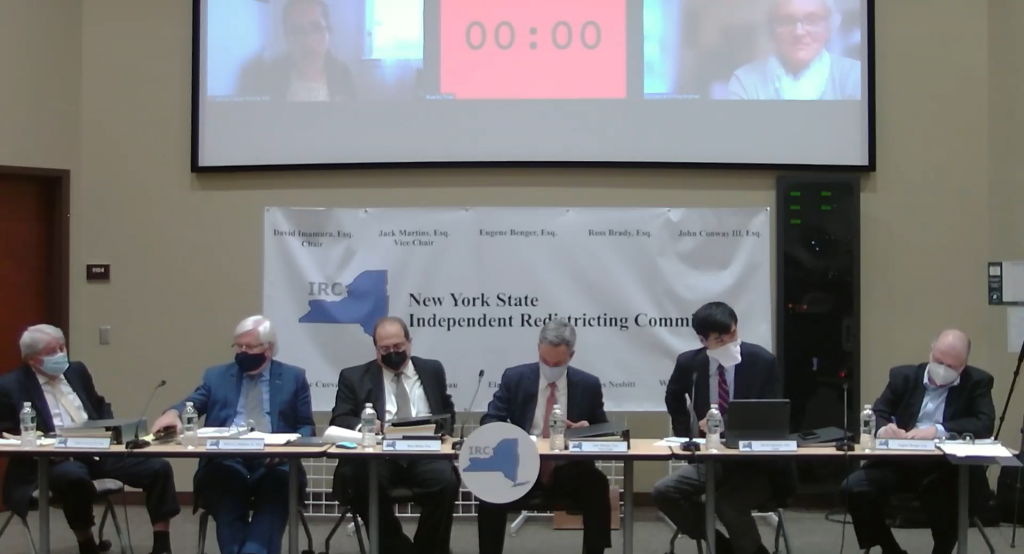On Monday afternoon, Southern Tier community members gathered at Binghamton University to make their voices heard in New York state’s redistricting process.
Every 10 years, all federal, state and local election district boundaries in the United States are required to be redrawn or revised. In the past, redistricting maps were drawn by state legislators themselves, but in 2014, an amendment was made to the New York State Constitution, which created an independent commission to draw the lines for state senate, assembly and congressional districts.
The New York State Independent Redistricting Commission (NYSIRC) organized a meeting in the Innovative Technologies Complex (ITC) to hear from the Southern Tier, in what was the third of 14 redistricting hearings across New York state. This round of hearings was being held to receive feedback on redistricting map drafts the commission had created of the state’s congressional delegation and the state legislature on Sept. 15.
Two separate maps had been proposed on Sept. 15, one by the five Democrats on the commission and another by the five Republicans, each of which would involve separating Binghamton from the 22nd Congressional District. The Democratic draft would add Binghamton to the 19th District, and the Republican plan placed Greater Binghamton in the 23rd District, both currently led by U.S. congressmen of their respective parties.
David Imamura, chair of the NYSIRC, started the event by reminding attendees that the proposed plans would change based on their feedback.
“As we said when the maps were released, those maps are just drafts, and they can, should and will change based on the input that we receive from you today,” Imamura said. “Tell us how the maps can be improved, how your neighborhood better fits in one district or another. I promise you that no detail is too small because at the end of the day these are your neighborhoods and district lines, not ours.”
One speaker, Kamala Keeley, president of Three Rivers Development in Corning, said she appreciated the representation provided by both drafts.
“Although there are differences in the highly populated areas in both draft versions, we feel there are greater commonalities encouraging fair representation,” Keeley said. “The communities are similar in character, needs and size. Respectfully, we ask that you maintain this regional cohesiveness in future drafts on both a congressional and state level.”
Another speaker, Constance Stirling-Engman, speaking on behalf of the League of Women Voters of Tompkins County, called for increased transparency on the plans, which she felt divided many counties, including Broome.
“What criteria are being used to come up with these plans?” Stirling-Engman said. “We need to be assured that there is no gerrymandering by either party represented on the commission. The committee must put the voices of the communities above the divisiveness of partisan politics. We must see a single set of plans that represents the viewpoints and needs of all our unique New York state communities.”
According to Imamura, the commission will submit results to the legislature for their review in January. As the event drew to a close, he described the constraints associated with drawing district lines.
“What drives the maps, first and foremost ultimately, is the numbers,” Imamura said. “We can have very strong opinions — in fact I do have very strong opinions — about certain communities being together with other communities, but at the end of the day the districts have to be in compliance with the law with regard to population.”



